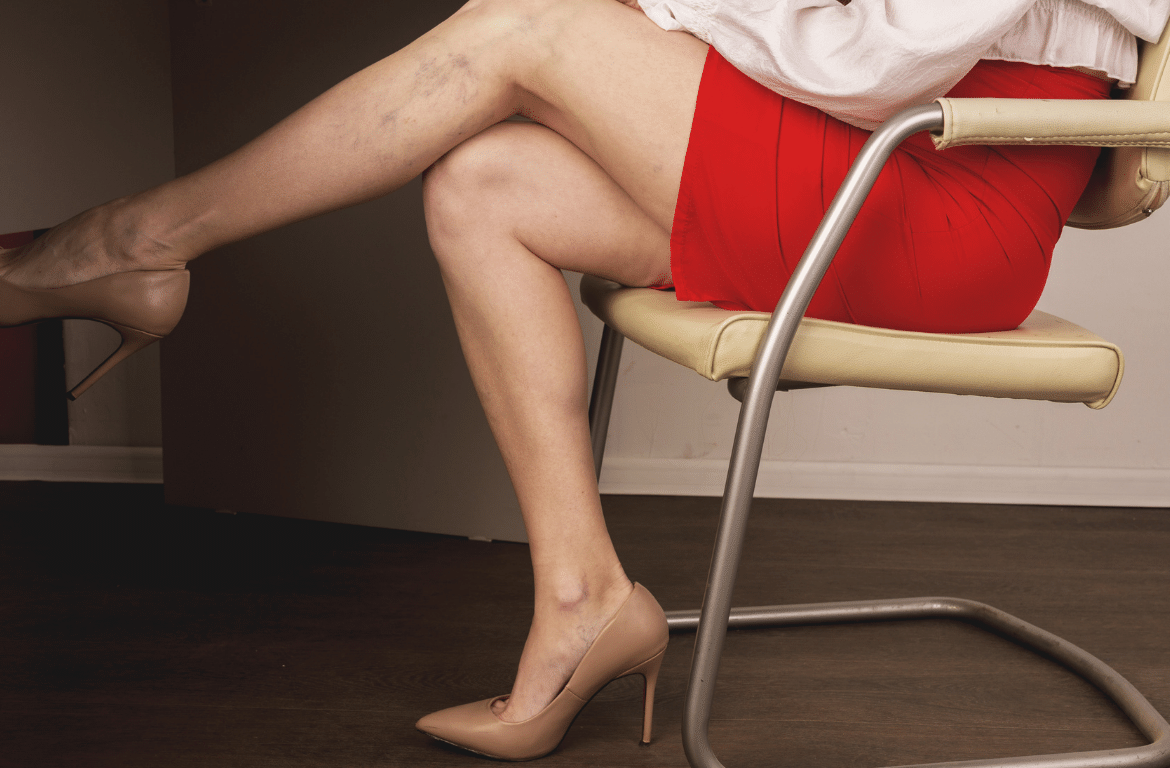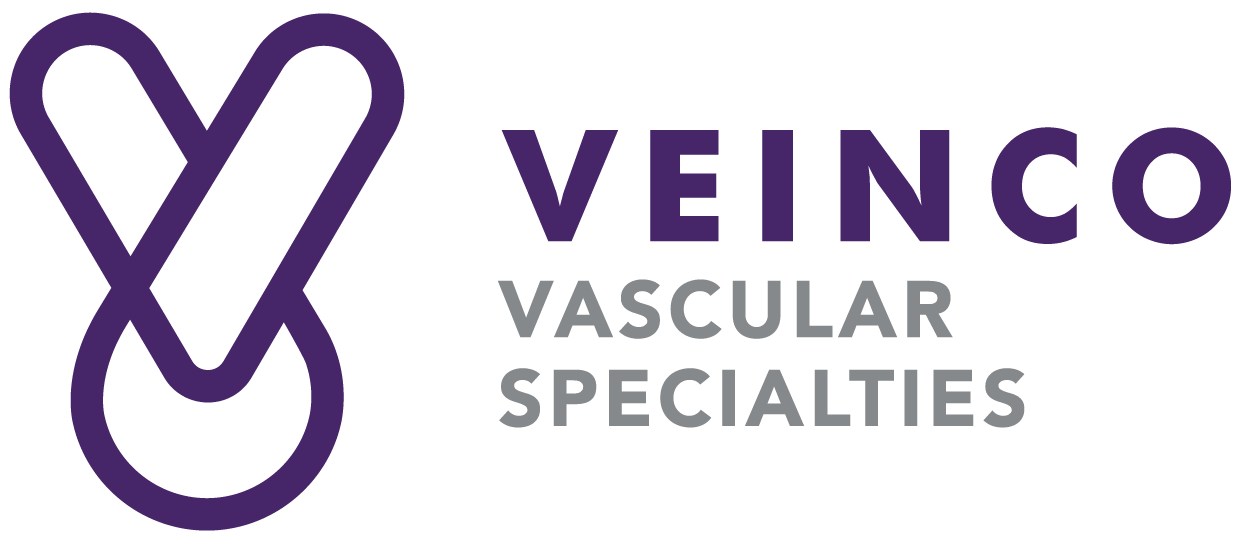
Varicose veins are not just a cosmetic problem. If they are not treated in time, they significantly impact health. The dangers of varicose veins can cause various unpleasant symptoms such as pain, swelling, itching, cramps, tenderness, or fatigue in the lower legs.
Varicose veins develop mainly in the legs. These veins have stopped performing their primary function: returning blood from the feet to the heart.
Did you know that, in some cases, they can cause more severe complications with serious consequences for your health? This article will discuss some of these dangers and how to treat the disease with minimally invasive varicose vein treatment. But first, we want to let you know the most common symptoms of varicose veins and why they might appear.
Dangers of varicose veins – factors that contribute to their appearance
There is no single factor that is the cause of varicose veins. Several factors can cause the appearance of this disease, and most of the time, several of them act together. Some of these factors are as follows:
- Genetic or hereditary factors. It is evident when it is observed that patients with varicose veins and spider veins have a family history of the same problem much more often than those without.
- Being on your feet for a long time can contribute to the onset of this disease. People who spend much time on their feet, such as waiters, teachers, hairdressers, or salespeople, are at higher risk for varicose veins.
- Pregnancy is one of the most critical factors in the development and aggravation of varicose veins. The hormonal changes that occur, as well as the compression exerted by the fetus on the large intra-abdominal return veins, cause the symptoms of chronic venous insufficiency to be triggered or aggravated during pregnancy.
- Other factors, such as heat —which includes direct exposure to the sun and all kinds of heat sources such as saunas, hot baths, or waxing—and excessively tight clothing can negatively influence the appearance and aggravation of varicose veins.
Varicose Veins: Symptoms
Many people with varicose veins report that the most common symptom is a feeling of heaviness in the legs, which increases throughout the day. Other symptoms are cramps and a burning sensation. These symptoms are more persistent or intense if you stand or sit for long periods and in hot environments.
When the disease is very advanced, other more severe symptoms appear. Visible changes begin to appear on the skin in the form of dark brown spots (this skin condition is called ocher dermatitis). Little by little, the skin becomes inflamed and stiff and not very elastic. Finally, ulcers may appear on the skin, which will be very difficult to heal.
Varicose veins do not usually appear drastically. Instead, they develop gradually and progressively. Therefore, detecting their evolution and early detection will be essential to avoid significant complications.
At Veinco, we want all patients, including those who present some of the symptoms mentioned above to feel at ease knowing that our vein specialists will provide them with all the tools and necessary treatment to prevent or reverse any severe or advanced state.. If you want to know chronic venous insufficiency stages and how to treat them, we invite you to click on the link.
What are some dangers of varicose veins?
Some of the dangers of varicose veins are the following:
Development of skin ulcers
Painful skin sores, red or blue, can form near varicose veins, especially near the ankles or legs. A discolored patch of skin is usually seen before an ulcer appears.
Blood clots
Blood clotting may happen if you feel persistent pain or swelling in your legs. Sometimes the deep leg veins become dilated and can cause pain and swelling in the legs.
Presence of bleeding
Sometimes the veins close to the skin burst. While this usually only causes minor bleeding, it does require medical attention.
Deep vein thrombosis (DVT)
It has two consequences, one derived from the effect of the thrombus in the affected vein and in the extremity whose return circulation is affected (postphlebitic syndrome), and another derived from the possible migration of the thrombus towards the lung. : Pulmonary thromboembolism, the latter, is the most severe complication of deep vein thrombosis and can lead to the patient’s death.
Minimally invasive varicose vein treatment
Some patients may have significant leg symptoms and not have varicose veins. In these cases, evaluation by vein specialists is vital, both to indicate whether the cause of the discomfort is chronic venous insufficiency or another possible pathology and to determine what venous alteration is causing it. Whether or not the patient has varicose veins, the most useful diagnostic method to evaluate the patient is echo-Doppler.
It is a fast and non-invasive technique; it can be performed in the exact consultation and does not pose any risk to the patient. With this technique, the vascular surgeon can perform an exhaustive assessment of the superficial and deep venous systems, determining the origin of the varicose veins, if any, and the possible areas where the deep venous veins found systemically are not working correctly. There is no need to use local anesthesia for this test.
After the echo-Doppler test, the vein specialist may recommend one of the following minimally invasive vein treatments:
- Laser Varicose Vein Treatment (endovenous laser ablation)
- Radiofrequency ablation
- Medical-grade blue
Treatment of varicose veins may include self-care measures such as the following:
- Take advantage of any circumstance to move your legs. If your job requires you to spend long periods standing or sitting, you should take short breaks while walking or shuffling.
- Avoid sources of heat: depilation with hot wax, hot baths, saunas, as well as prolonged exposure to the sun.
- Walking is a greatly beneficial sport for circulation; gymnastics, cycling, dancing, or swimming are also helpful.
- Take a daily cold shower on your legs.
- Avoid clothing that is tight at the waist.
Depending on the patient’s stages of varicose veins, other treatments can be used including:
- Sclerotherapy
- Wear compression stockings
These are not considered minimally invasive treatments. Instead, they are cosmetic procedures or supporting aids in the case of compression stockings.
Avoid the dangers of varicose veins successfully
At Veinco, we are your best option to combat varicose veins dangers. Our team of specialists will offer you quality medical care at affordable prices.
Stopping the adverse effects and living a life free of varicose veins begins now. Schedule your appointment today at the number (888) 568 3409. You can also write to us at hello@veinco.com.mx.
